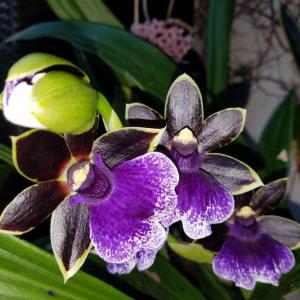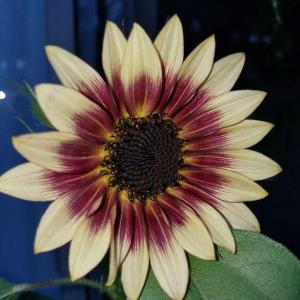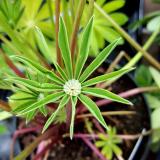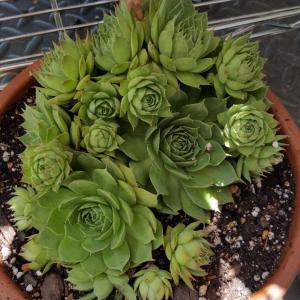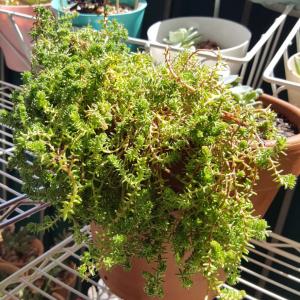文章
Dummer. ゛☀
2017年07月31日

Family - Lauraceae
Stems - Stems to 5m tall, multiple from the base. Twigs glabrous, olive-brown, with small lenticels.

Inflorescence - Staminate flowers in a few-flowered (4-8) fascicle, emerging with the new leaves. Pedicels glabrous, to 3mm long (slightly longer in fruit).
Flowers - Petals absent. Sepals 6, greenish-yellow to scarious-yellow, 2.3mm long, 1.5mm broad, glabrous, rounded at the apex, oblong-obovate. Stamens 9 (in staminate flowers), alternating with smaller capitate staminodes. Filaments glabrous, to 1.8mm long. All floral organs united at the base. Reduced ovary in staminate flowers to -1mm long. Drupe bright red, ovoid, to 1cm long, 5mm broad.

Flowering - March - May.
Habitat - Low moist woods, bottoms, thickets along streams, base of bluffs, seeps along wooded slopes.
Origin - Native to U.S.
Other info. - This shrubby species is easy to identify in the field because of its habitat and its pleasant fragrance. When crushed, the leaves give off a lemon scent that is reminiscent of "Pledge" furniture polish. The small flowers of the plant are some of the first to be seen in the spring. They are short lived and the plant is typically seen with just leaves or in fruit. This is a dioeceous species, meaning plants will have either male or female flowers. Staminate plants typically have many more flowers than pistillate plants.
Natives used a tea made from all parts of the plant to treat ailments such as coughs, cramps, measels, and anemia. Oil from the fruits was applied to bruises. A tea made from the bark was used to expel parasitic worms. The tea is quite good, if a sweetener is added. (give me a break, I'm from the south)
A similar species, L. melissaefolium (Walt.) Blume, is extremely rare in Missouri and is endangered in North America. This latter species occurs in just one southern Missouri County (Ripley). L. melissaefolium has larger fruits than L. benzoin and more rhombic leaves. The leaves are shown below:
Stems - Stems to 5m tall, multiple from the base. Twigs glabrous, olive-brown, with small lenticels.

Inflorescence - Staminate flowers in a few-flowered (4-8) fascicle, emerging with the new leaves. Pedicels glabrous, to 3mm long (slightly longer in fruit).
Flowers - Petals absent. Sepals 6, greenish-yellow to scarious-yellow, 2.3mm long, 1.5mm broad, glabrous, rounded at the apex, oblong-obovate. Stamens 9 (in staminate flowers), alternating with smaller capitate staminodes. Filaments glabrous, to 1.8mm long. All floral organs united at the base. Reduced ovary in staminate flowers to -1mm long. Drupe bright red, ovoid, to 1cm long, 5mm broad.

Flowering - March - May.
Habitat - Low moist woods, bottoms, thickets along streams, base of bluffs, seeps along wooded slopes.
Origin - Native to U.S.
Other info. - This shrubby species is easy to identify in the field because of its habitat and its pleasant fragrance. When crushed, the leaves give off a lemon scent that is reminiscent of "Pledge" furniture polish. The small flowers of the plant are some of the first to be seen in the spring. They are short lived and the plant is typically seen with just leaves or in fruit. This is a dioeceous species, meaning plants will have either male or female flowers. Staminate plants typically have many more flowers than pistillate plants.

Natives used a tea made from all parts of the plant to treat ailments such as coughs, cramps, measels, and anemia. Oil from the fruits was applied to bruises. A tea made from the bark was used to expel parasitic worms. The tea is quite good, if a sweetener is added. (give me a break, I'm from the south)
A similar species, L. melissaefolium (Walt.) Blume, is extremely rare in Missouri and is endangered in North America. This latter species occurs in just one southern Missouri County (Ripley). L. melissaefolium has larger fruits than L. benzoin and more rhombic leaves. The leaves are shown below:
0
0
成长记
Succulentsister
2017年07月30日
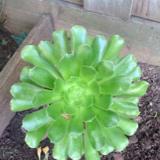
I new added a "Jelly bean" in my "garden"


1
0
meriunkat:can I just say this look more like pachyphyllum





